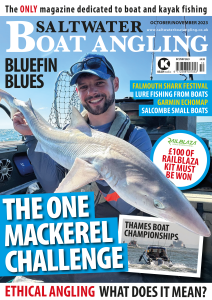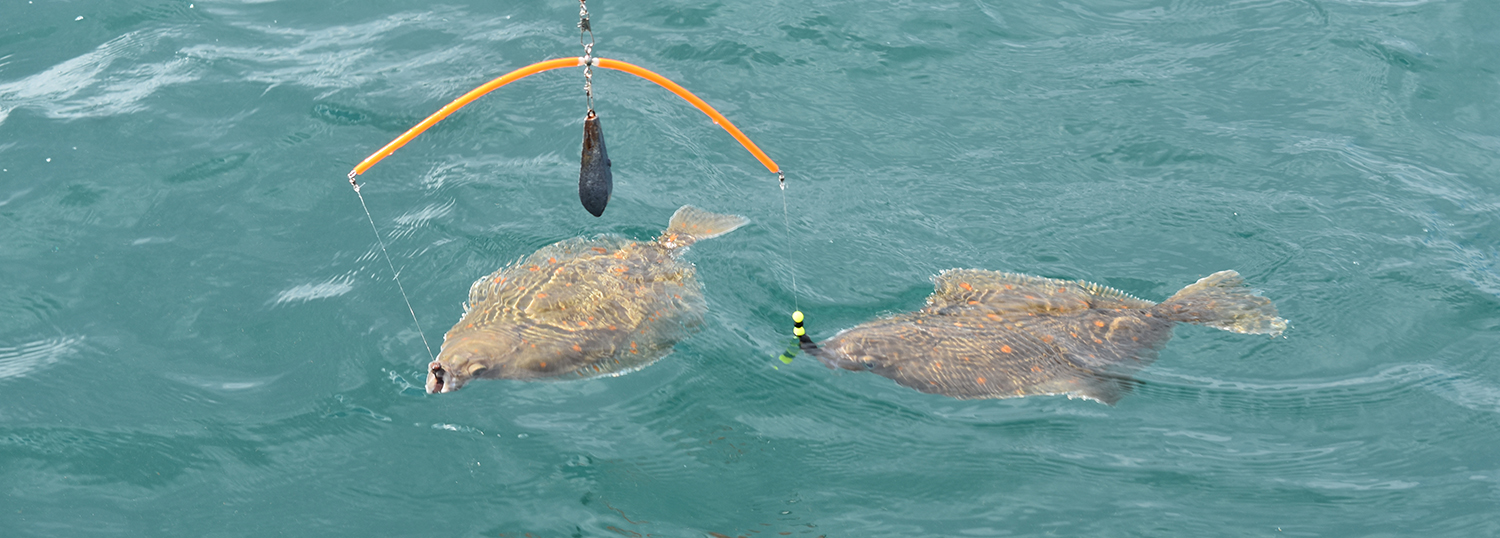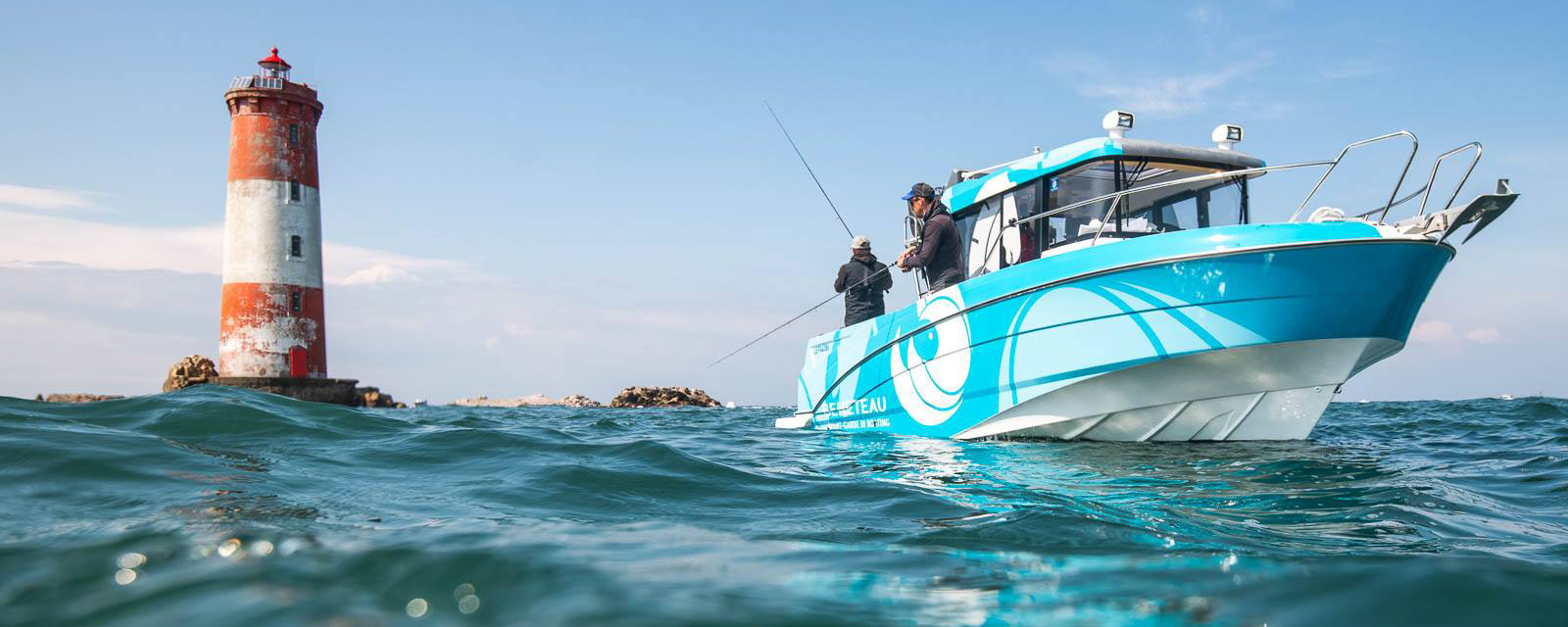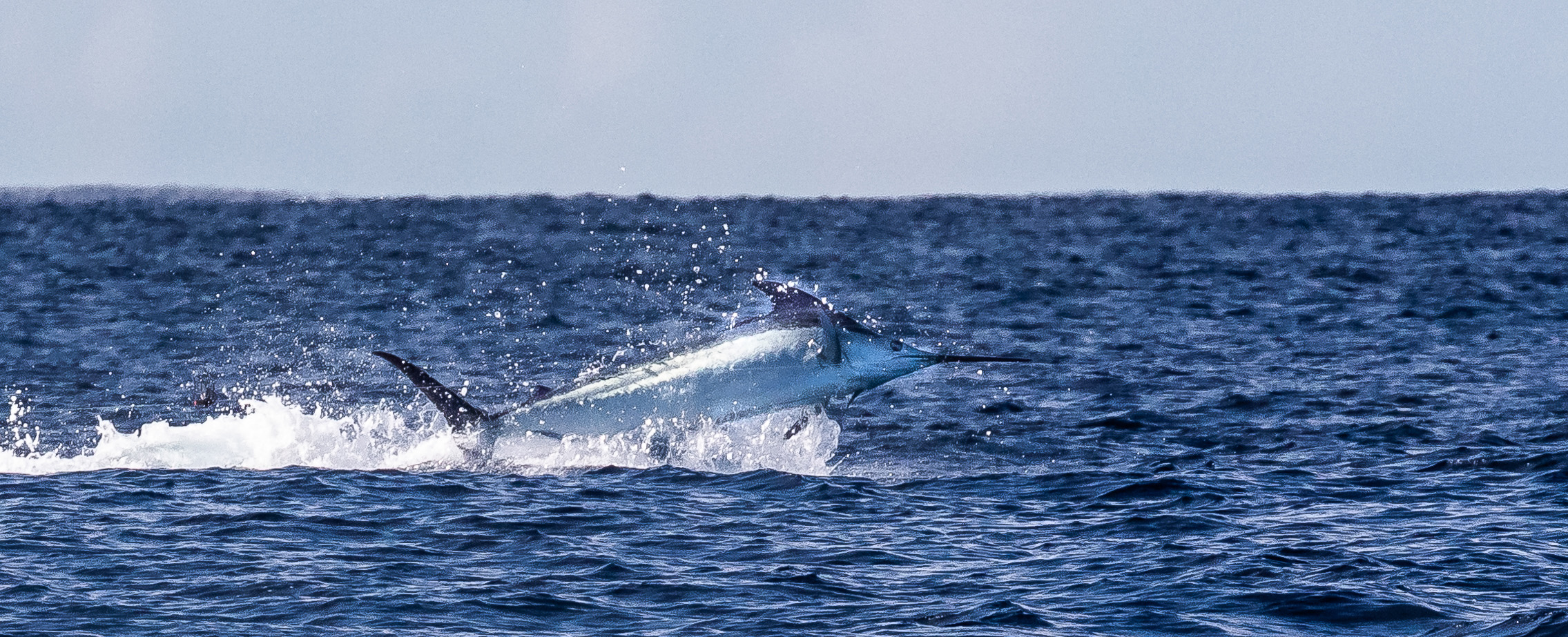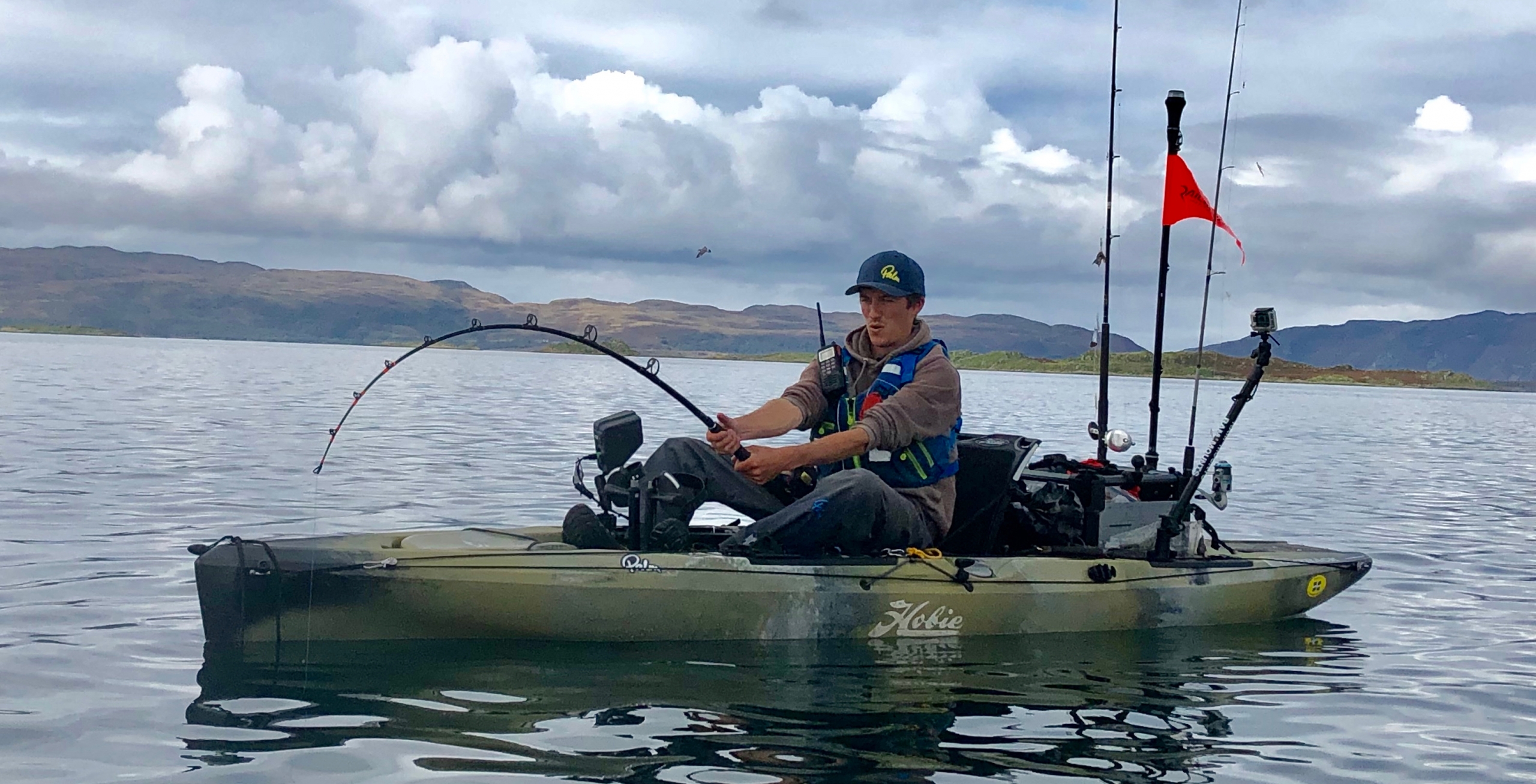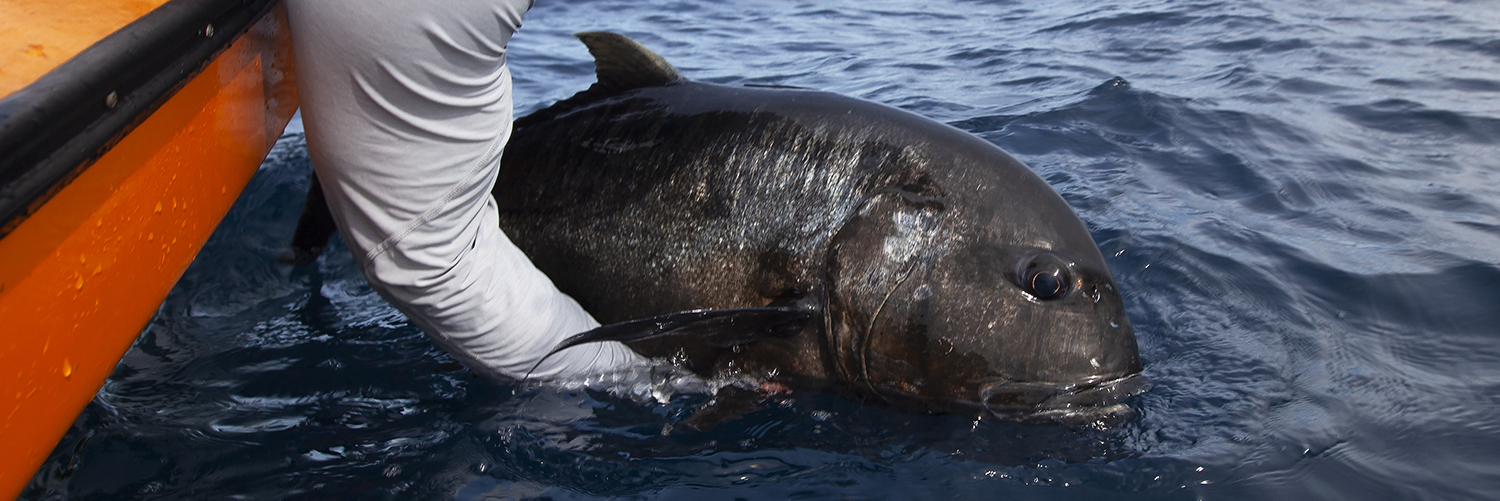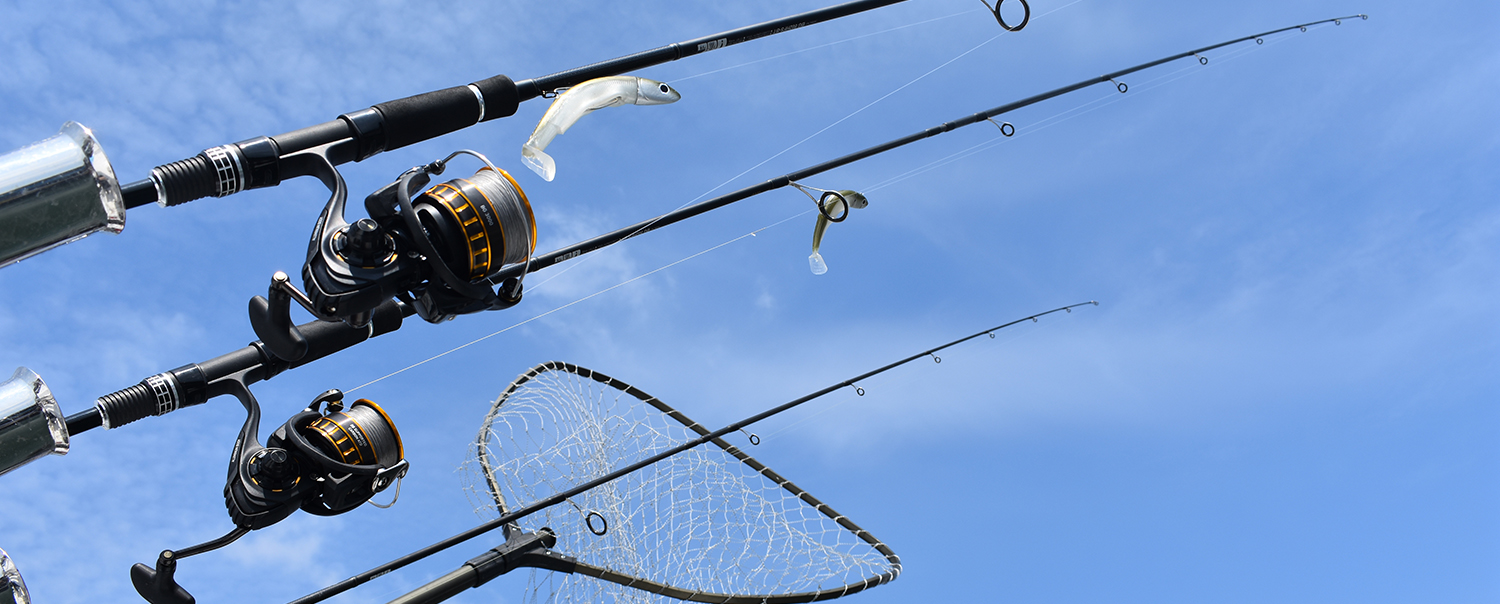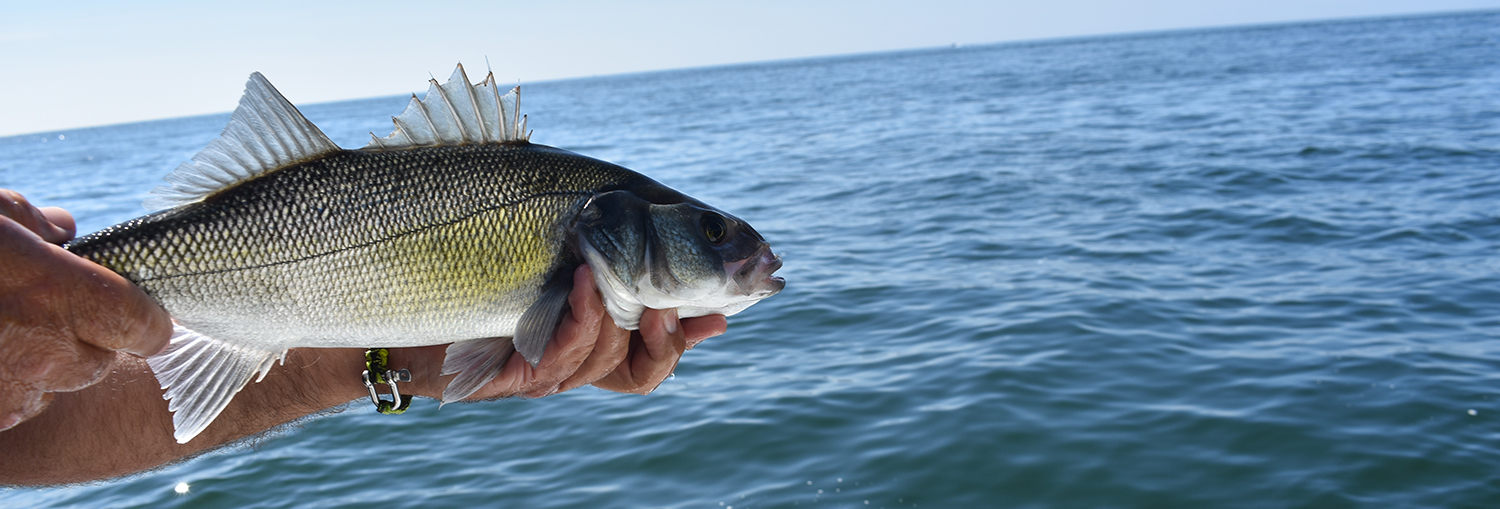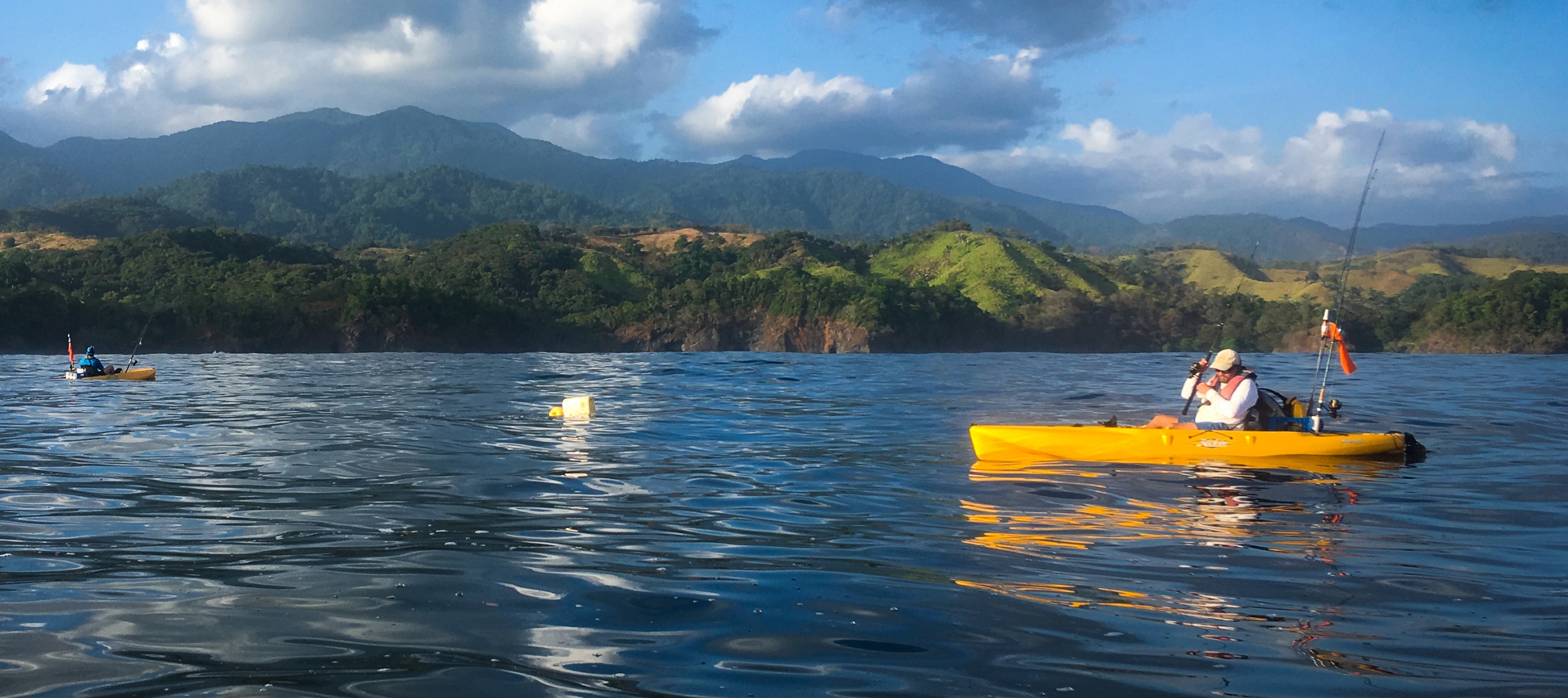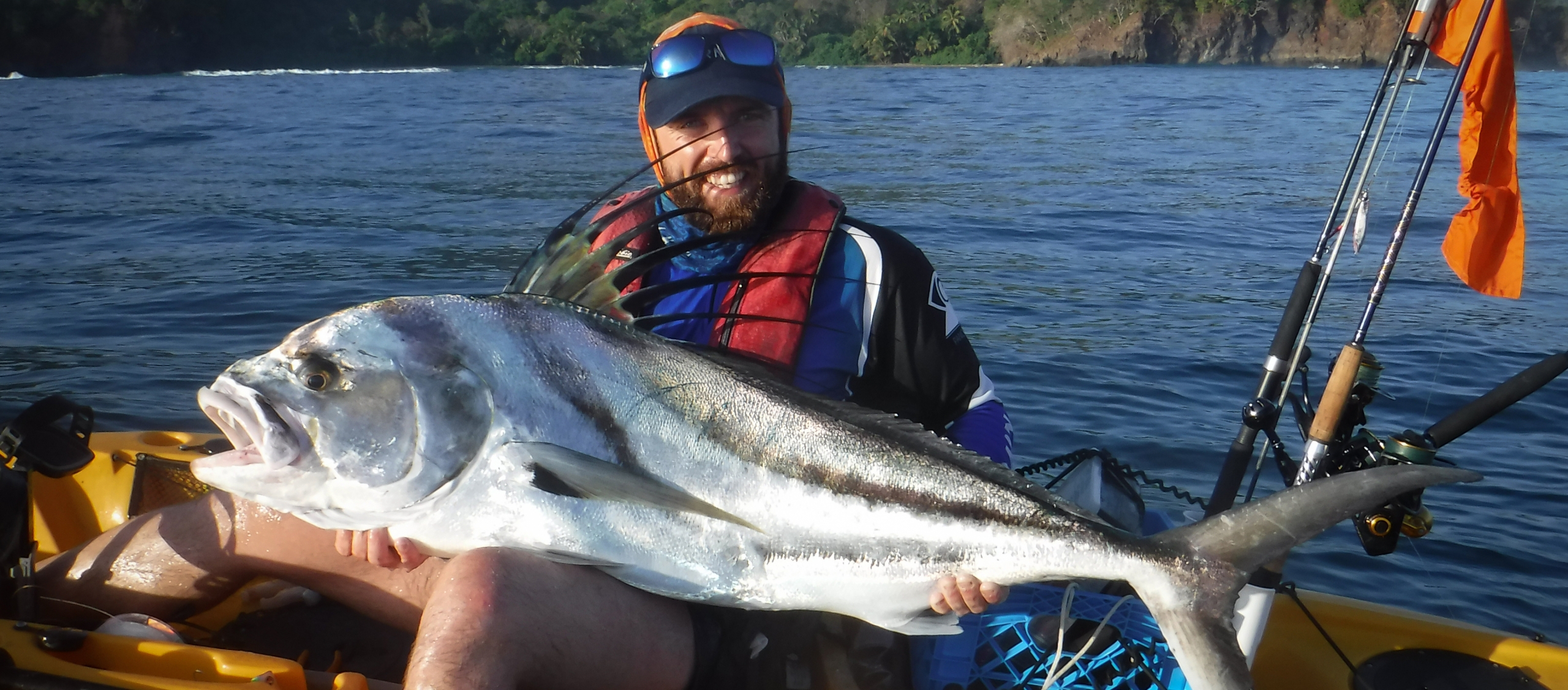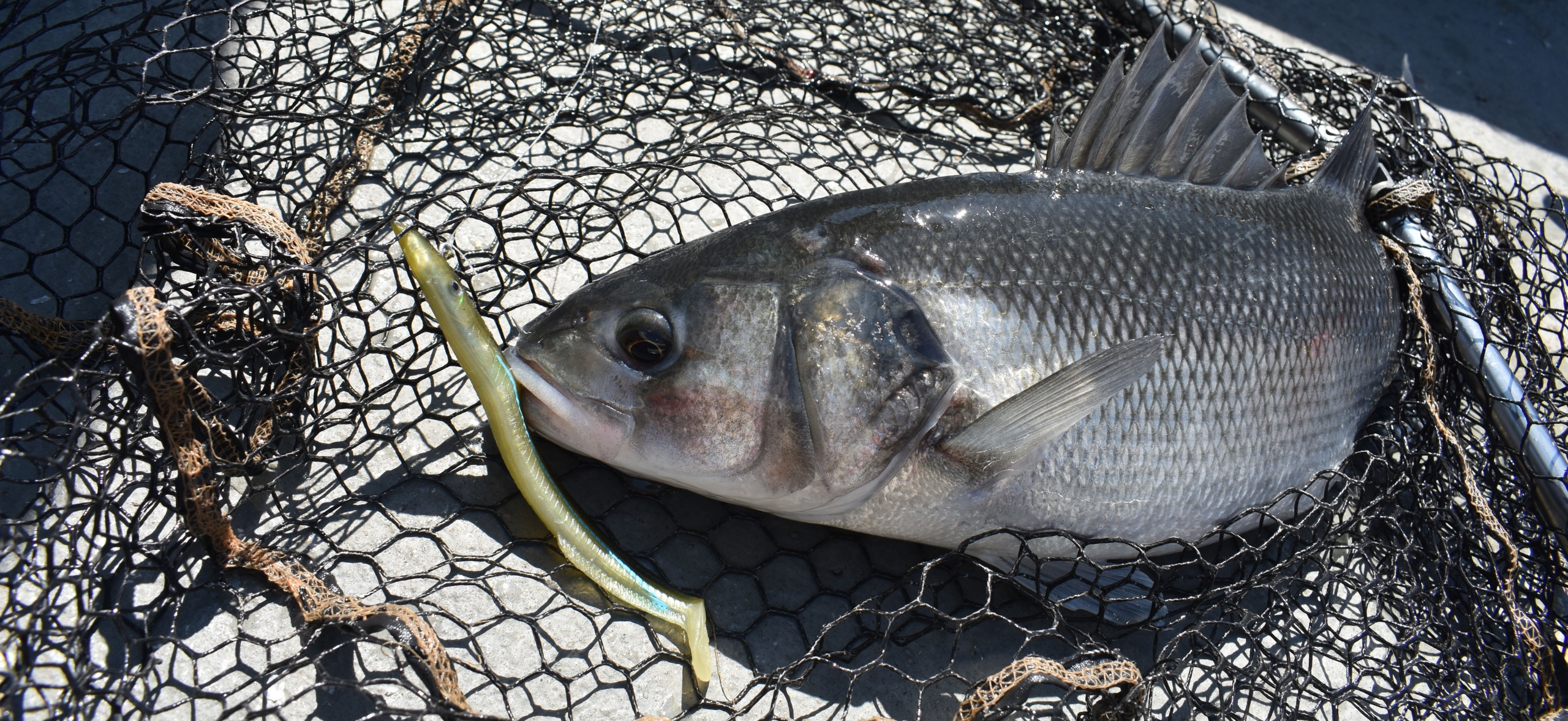Introduction
Anchors are very important piece of kit for all anglers with boats and its important to get the right anchor for your boat and the type of ground you want to fish over. Firstly Jeff Smith outlines his advice on anchors and then we run through the various different types of anchor available. We also look into anchors for kayaks: same principles but slightly different requirements and techniques.

Your boat's anchor is, in effect, your hand-brake and, as such, is a very important piece of safety equipment as well as an effective aid to successful mark fishing.
If you suffer a mechanical malfunction, the first thing to do is deploy your anchor in order to maintain a static position to avoid encountering hazards, or becoming a hazard yourself to other boat traffic. This will give you time to safely assess your situation, remedy the problem or, summon help if necessary whereupon, you will need to provide details of your exact position, and remain in that position until help arrives.
Ensuring that you have the correct device on board for your craft, and that it is suitable for the ground that you intend to anchor over, and that you know how to use it correctly, is of paramount importance.
The Bruce and the Grapnel
The pictures show the two different designs that I use on my own boat, both of which I have found to be very effective. On the left is a galvanised steel Bruce anchor which weighs 5kg. This should be suitable for most fishing dinghies up to about 5.5 metres in length however, if you know someone who has a similar craft to your own, it's worth consulting them as to what size they use. I also carry a 7.5kg version, as a spare, but have only needed to use it on rare occasions when I'm anchoring in relatively deep water in very fast tides and rough-sea conditions.
The Bruce, which is an extremely efficient design for its weight, works by digging its flukes into the sea bed and should therefore only be used on relatively soft substrates such as sand, mud and shingle and never used on rock marks.
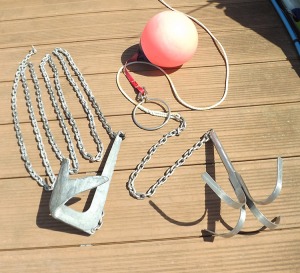
The Chain
You'll notice that it is attached to a heavy chain, In this case with a width of about 25mm, and at least the length of the boat. Mine is 7 metres long and made from stainless steel which, although considerably more expensive than mild-steel chain, will not rust and stain your precious white-gel coat.
Being relatively heavy itself, the chain will lay flat and therefore drag the anchor parallel to the sea bed until it digs in enough to hold the weight of the boat against the flow of the tide.
Trip Mechanisms
It is securely attached to the crown (front) of the anchor by a U-shackle, which is often locked off (moused) in place by stainless-steel wire and attached to the end of the anchor stock (shaft) by a weak link, or 'trip' mechanism which, in this case, is cable ties. Should the anchor become heavily snagged and difficult to retrieve, the cable ties will break, allowing the anchor to trip and be pulled out backwards, hopefully free of the snag. I tend to use three 5-millimetre width cable ties but it's useful to experiment with different configurations. Light twine or, at a pinch, some heavy mono-filament fishing line can be used instead of cable ties, if preferred, and again, it's really a case of trial and error to see what works best for you. If you find that the anchor is tripping too easily, just gradually increase the number of cable ties, or turns of twine/mono, until it holds effectively.
One important tip: ensure there is a little slack in the chain between the crown and eye before attaching the trip mechanism in place, as this will allow the anchor to release more effectively.
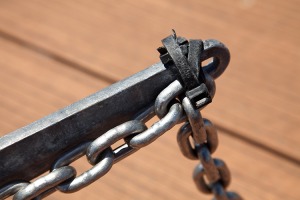
Grapnel style
Although a relatively compact design, the only disadvantage of the bruce-style of ground anchor is that it doesn't fold flat, and therefore may be difficult to stow if you're limited for space. If that is the case, other designs such as the danforth might be considered as alternatives. If you intend to anchor your boat over a rocky, or snaggy, sea bed such as a reef mark, then you're going to need the grapnel design shown on the right of the picture. (Do not confuse this design of anchor with the commercially-available folding grapnels commonly seen in use on tenders and small dinghies which, in my opinion, are not suitable for this application).
The grapnel works by snagging on a rough section of sea bed and, ideally, should be constructed with prongs that are of a suitable gauge of steel to hold the boat firmly, yet pliant enough to bend out easily on retrieval to free the anchor.
Following retrieval, the anchor is simply reshaped by hand so that it can be re-used. A half-metre length of hollow tubular steel or alloy of a diameter than fits over the prongs can be pressed into service as a suitable tool to provide enough leverage for this purpose or, in my case, judicious use of my bow roller, which acts as an ideal lever. The grapnel pictured above weighs just 3kg, which is heavy enough to sink efficiently to the sea bed. It is 500 millimetres in length, 350 millimetres wide, with prongs 25x5 millimetres in cross-section and again, although not strictly necessary, constructed in stainless steel.
Suitable grapnels can be quite tricky to source commercially but very effective mild-steel versions can be fabricated quite simply by welding lengths of mild-steel concrete reinforcing bar, of a suitable diameter to allow hand bending, to a hollow steel stock, which can be filled with lead to add the necessary weight. If you do not have the necessary DIY skills or equipment, the services of a local steel fabricator can be employed relatively cheaply and I would strongly advise getting a spare made up at the same time.
Grapnel chain:I attach a short 1 metre length of chain directly to the end ring of the stock, which is purely there to prevent the rough sea bed from chafing the main anchor rope. Experience has shown that longer lengths of chain do not increase holding efficiency when used with a grapnel, and can be a hindrance as they themselves can become wrapped around rocks, or jammed in crevices, and become permanently snagged, especially if the boat is allowed to swing in slack-tide situations. To minimise the chances of this happening, when fishing this type of ground, I always reset my anchor when the tide changes direction.
Although down to personal preference and easy enough to engineer, following some experimentation I've found no advantage in rigging a trip device to this style of anchor and have, instead, relied wholly on the prongs bending out on retrieval which, thus far, they have done so with complete reliability.
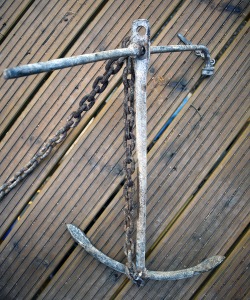
Rope
To be suitable for the purpose, anchor rope needs to be strong enough to hold the boat in fast tides and deep water, and thick enough to handle comfortably. It also needs to be non-floating so as to effectively set the anchor and not cause a hazard to the boat's propeller at slack-tide. I would strongly advise that a three-strand nylon rope of approximately 10 millimetres diameter would be suitable, and ensure that you have enough length for at least three times the depth you intend to fish.
I carry 100 meters of rope when anchoring in deep water of around 30 meters or more, although I rarely need to use the full length, as the force of the tide on the rope tends to assist the anchor to dig into the sea bed. Ideally, a spliced loop should be formed at the anchoring end of the rope which is then attached to your chosen anchor chain by a suitably sized U-shackle (see picture) and securely tightened using a pair of heavy-duty pliers. Having lost an expensive anchor through a shackle working loose, I tend to check all U-shackles for tightness in between each trip. The standing end should be securely fixed to a point on the boat, ideally as close to the bow as possible. Having an opening anchor hatch and some form of locker in the bow, is a huge advantage on this class of boat both for safety and storage convenience but, if you are forced to deploy the anchor 'over the side' then a suitable container can be fabricated from a stout plastic drum, or heavy-duty moulded stacking box where you can store the anchor, chain and rope.
It might sound like common sense but, the anchor should ALWAYS apply its force to the boat at the bow and never, under any circumstance, be attached to cleats anywhere else on the hull. Doing so could prove extremely dangerous and result in the boat sinking so, if anchoring from the side, a method needs to be devised so the anchor rope passes through a bow roller first, before tying off to a convenient cleat.
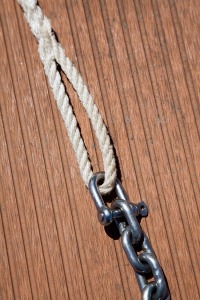
If you enjoyed this article you can buy the issue or subscribe by clicking the links below:
Buy digital copies - £2.99 each Subscribe Now Digital Subscription Click here for 12 Months of digital issues for £19.99
